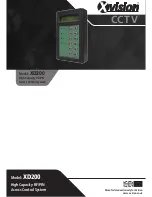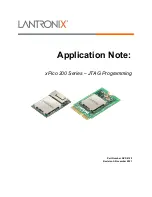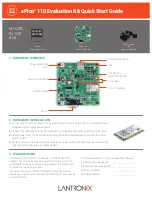
Overriding door state
In addition to being able to define an override time zone for a door, there are
additional methods for overriding a door’s default state. These methods are:
Door schedules
(see the “Door schedules” section below).
Door overrides
(see the “Door overrides” section on page 26).
Door state priorities
The priorities for controlling the state of a door are as follows, from highest to
lowest priority:
1. Direct control from management software, e.g. an operator sends a door
open/unlock command.
2. User access, e.g. a user badges their card at
a door’s card reader.
3.
The door’s schedule, set using management software.
4.
The door’s programmed override time zone (which uses an installer-
defined panel time zone), set using configuration software such as
CTPlus, or the door
’s override (set using management software).
Door schedules
Up to 100
door
schedules
can be programmed in the NAC, allowing for very
flexible door locking and unlocking schedules.
Door schedules have an
active period
(set via a
start date
and an optional
end
date
). If no end date is set, then the active period is for the start date only. You
can also specify if the door schedule is active on particular days of the week
(and/or holidays) during the active period.
Door schedules must be configured with a
start time
for when the
start action
(e.g. door unlock) will be executed.
Start actions can be either
timed
or
immediate
:
Timed actions have an
action duration
that can be configured from 1
second to 366 days. The door will remain in the state defined by the start
action for the action duration.
If the door’s state is overridden (e.g. by management software or a user
badging a card), then at the conclusion of the overriding state, the door
will revert to the state defined by the start action. At the end of the active
duration, the
end action
, if defined, will be executed.
If no end action is defined, then the door will revert to its default state.
If no action duration is configured, then the start action is immediate. The
door will remain in the state defined by the start action.
If the door’s state is overridden (e.g. by management software or a user
badging a card), then at the conclusion of the overriding state, the door
will revert to its default state. The start action will no longer have any
bearing on the state of the door.
Содержание TS1066
Страница 1: ...TS1066 Network Access Controller Programming Manual P N MAPROG TS1066 REV 1 6 ISS 16AUG19 ...
Страница 4: ...ii TS1066 Network Access Controller Programming Manual APPENDIX B Enclosure Access Restrictions 106 ...
Страница 6: ......
Страница 36: ...See Status and control section for more details depending on the operating mode of NAC ...
















































